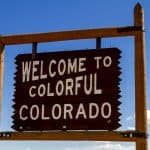Have you ever been in the middle of cooking during a camping trip and it started raining? Or maybe the mosquitoes are out in full force, and the thought of using a headlamp in a swarm to cook up dinner is unsettling, so you’d rather use a stove in a tent?
Whatever situation you find yourself in that makes cooking outside less than ideal, you’ve likely wondered whether it’s safe to use a stove in a tent.
Using a stove in a tent is possible but very dangerous. Unless you use a stove system specifically designed for cooking in a tent and have taken proper safety precautions, it can lead to carbon monoxide poisoning or the tent catching fire.
Even if you take all necessary precautions, cooking in a tent is still much riskier than cooking outside.
We’ll first discuss in this guide the dangers of cooking in a tent and safety precautions to help reduce the risks. Then, we’ll take a look at some tent stove options and run you through how to use the most highly recommended stove for cooking in a tent—a wood-burning stove.
Dangers of Using a Stove Inside a Tent
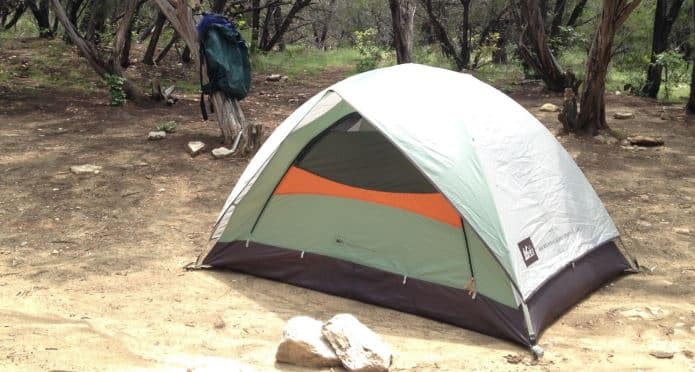
Unfortunately, the use of stoves in tents kills people every year. These campers are unaware of the risks or have not taken the proper precautions to minimize the risks.
Before deciding that cooking inside a tent is the right move for you, you must understand the dangers you face.
Carbon Monoxide Poisoning
Sometimes referred to as the silent killer, carbon monoxide is an odorless, colorless, tasteless gas that is incredibly dangerous. According to the CDC, at least 430 people in the US die each year, and around 50,000 are hospitalized due to carbon monoxide poisoning.
The combustion of fuel in a camping stove produces carbon monoxide. When we cook outside, it mixes with other gases and spreads liberally through the open-air environment, effectively eliminating its potential to cause harm.
However, using a stove in a tent without taking the necessary precautions causes carbon monoxide to build up within the enclosed space.
As you breathe in carbon monoxide, the oxygen in your red blood cells begins to replace oxygen with these harmful gas molecules. The overabundance of carbon monoxide (mayoclinic) in the bloodstream will lead to tissue damage and death.
Symptoms for the onset of carbon monoxide poisoning include dizziness, headache, shortness of breath, vomiting, and feeling weak or tired.
The amount of time it takes to feel symptoms or for the poisoning to reach fatal levels varies, but in high concentration cases, it can happen in minutes (iowastateunversity).
Setting The Tent on Fire
Even though individual tents may boast the use of flame-resistant or flame-retardant chemical treatments during the manufacturing of their fabrics, there are no fireproof tents.
It doesn’t matter if the tent is nylon, polyester, or canvas, or if it’s been chemically treated or is entirely untreated. Given long enough exposure, it will set on fire.
You’re also likely to be storing other flammable, potentially even explosive (think aerosol bug spray) gear in your tent.
It’s easy to get distracted while you’re cooking. And, even if you’re attentive, there’s always the possibility the stove malfunctions or that you haven’t taken the proper precautions to prevent fire. If things go wrong, they’ll go wrong quickly, and you could find yourself in a dangerous situation!
Best Wood Stoves for Cooking in a Tent
The only cooking wood stove you should ever use in a tent is some variation of a wood-burning stove with a chimney (flue pipe) which directs smoke out of the tent. This stove, Fltom Camp, with a flue pipe is recommended.
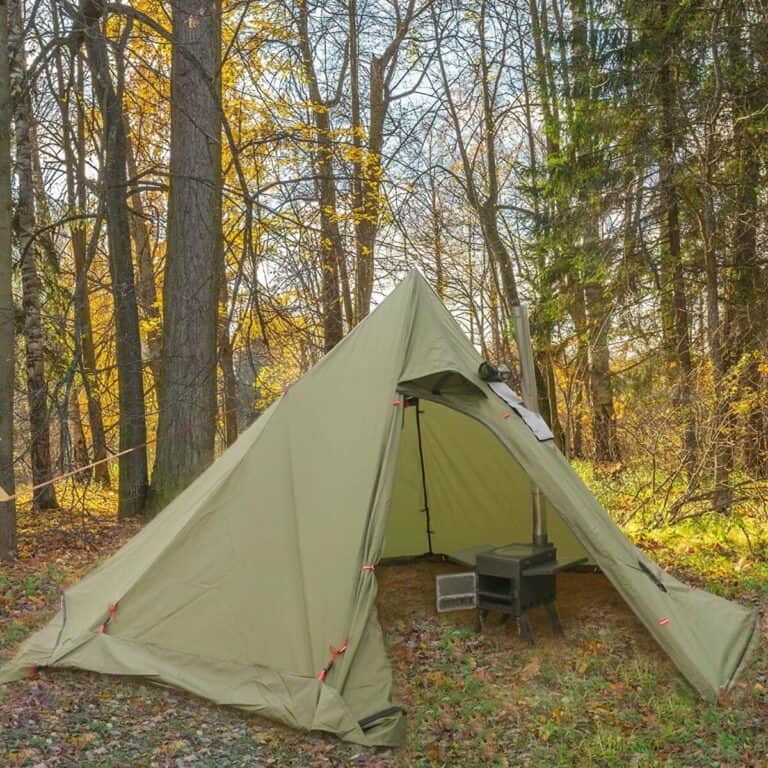
Though they come in different shapes and sizes and have unique features, the stoves meant for use in a tent all have one common quality–they burn wood as fuel and have a flue pipe.
Although there is still a risk of carbon monoxide poisoning if you don’t use a wood stove properly, the risk is far greater than if you were to use a gas or liquid fuel stove.
Gas and liquid cooking stoves emit high levels of carbon monoxide and typically have no built-in way of isolating and removing gas from the tent.
When burning these fuels, the deadly gas by-product disperses and accumulates throughout the enclosed area with the potential to reach a dangerously high level of concentration.
Wood-burning cooking stoves designed for use inside a tent, on the other hand, have a flue pipe that acts as a chimney, directing smoke and gas outside of the tent. If set up correctly, it prevents the by-products of burning from freely dispersing throughout the tent and minimizes carbon monoxide concentration levels.
Depending on your camping style and the type of tent you own, two general types of wood-burning cooking stoves may fit your needs.
Make sure to check out our article, Best Small & Large Wood Burning Backpacking Stoves.
Full-Size Wood Stove
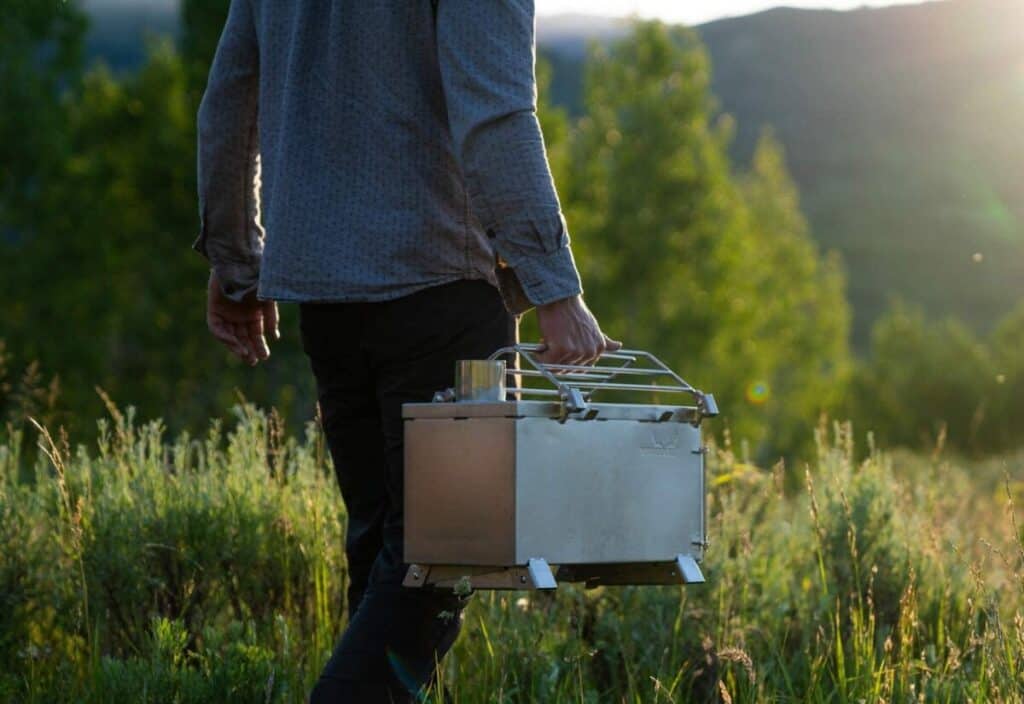
These are the type of stoves you might see used in a glamping setup or by hunters who set up camp in one place for an extended time.
If you’re trying to get someone that is not keen on the idea of living like a bum for a few days, check out our article, How to Make Camping Bearable for Those Who Hate It.
They’re the same size as wood-burning stoves used in homes and just as heavy. They have large flue pipes, sealed gaskets on the doors, and use seriously heavy-duty material.
The benefit of full-size wood stoves is that it heats larger and smaller tents more efficiently than portable wood stoves. The unit’s size provides serious heat, warming up larger tents that a smaller wood stove may struggle to heat.
Even on smaller tents that smaller stoves are entirely capable of heating, a full-size stove allows you to use bigger, slower-burning pieces of wood as fuel. This means you won’t have to refill the stove as often, and you’ll spend less time chopping wood into smaller pieces.
The downside is the price and the weight. They typically cost more than smaller units and, although they’re portable to a certain degree, you wouldn’t want to have to move one around very often.
Check out the Winnerwell Nomad for a complete setup that comes with everything included for cooking and heating inside a tent.
Portable Woodstove
Smaller, more portable wood stoves are far more common than full-size stoves. They’re typically less than a couple feet long and are easy enough to pack down and lift out.
Like the full-size wood stove, they also have flue pipes. However, they usually don’t have sealed gaskets on the doors, and the material is not as heavy-duty.
The benefit of portability comes at the expense of heating efficiency and convenience. You won’t be able to heat as large of a tent as a full-size unit, but for the majority of campers with small-medium size tents, that won’t be an issue.
However, what can become a bit of a hassle is the frequency of refilling them. Because the stove can’t fit as much wood, its quantity will burn out quicker.
Also, you won’t be able to throw in large pieces of wood like with a full-size stove. So, you’ll be doing more chopping to keep these stoves burning.
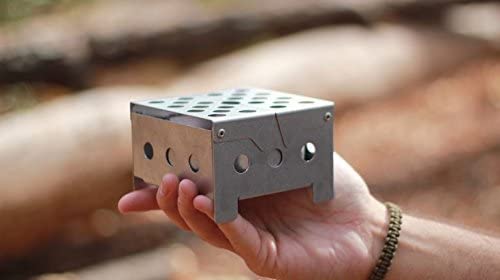
The Safest Way of Cooking Inside of a Tent
The safe way of cooking inside of a tent is to not completely be inside. If your tent has a vestibule, you can use your preferred way of cooking food while staying out of the rain and wind.

This is how I cook with the weather is bad. A backpacking stove like a jetboil does great in the wind while boiling water quickly.
Safety Precautions for Using a Stove Inside a Tent
Although it’s impossible to eliminate the dangers of using a stove in a tent, there are a few things you can do to help reduce the risks.
Stay Attentive
It seems like this should go without saying, but we all know how easy it is to get distracted while cooking or attempt to multi-task to save time. Whenever there’s an open flame in the tent, there should be at least one person in your group responsible for watching intently.
If you’re camping solo, consider prepping your food before lighting the fire. Anything could happen while you’re head is down chopping carrots. So keep a dedicated eye on that fire and resist the urge to multi-task.
If you are hiking and camping solo, take a look at our guide, Women’s Solo Hiking Guide! While this guide is geared towards women (and written by one), it’s generally great advice for anyone.
Use a Canvas Tent
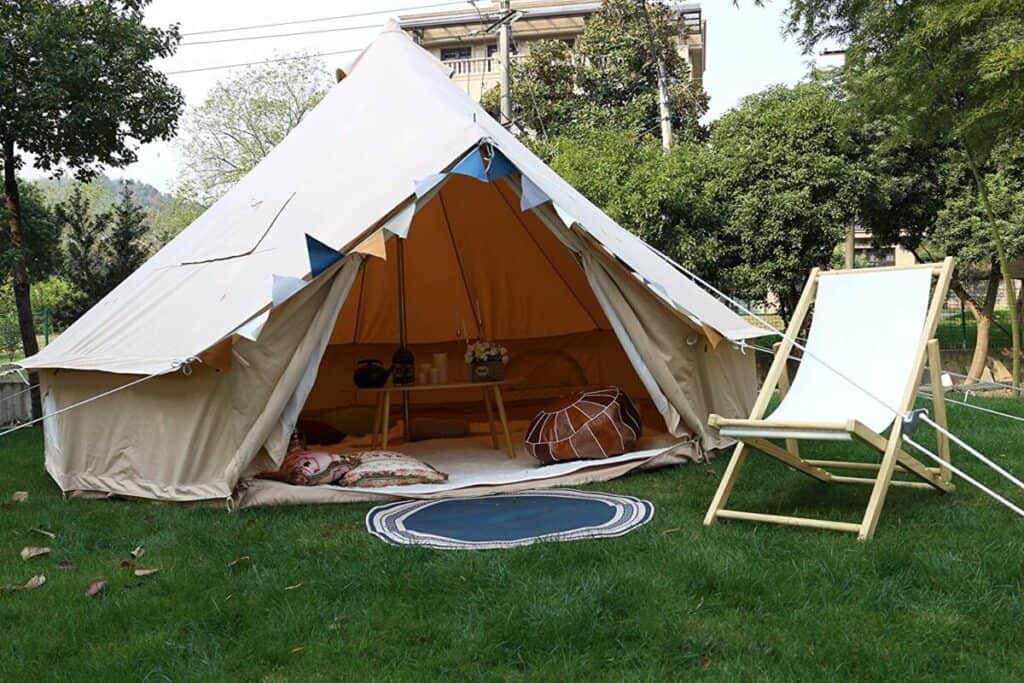
The natural fibers in the canvas are much heavier and more fire-resistant than tents made from thinner, synthetic material such as nylon and polyester. A canvas tent treated with fire-retardant chemicals provides an even greater degree of fire resistance.
Keep in mind this does not mean these tents are fireproof.
It is still very possible that they will catch on fire, which is why you should always exercise extreme caution while using a stove inside of one.
Keep Flammable and Combustible Gear at a Distance
Be sure to keep clothes, books, sleeping bags, or any other flammable material as far away from the stove as possible.
If you have combustible items such as bug spray or other aerosol products, consider removing them entirely from the tent while the stove is in use.
Safe Flue Pipe Placement
One of the most dangerous parts of a stove is the end of the flue pipe. If the pipe doesn’t clear the highest part of the tent by at least a half foot, you risk the heat and sparks landing on a higher part of the roof and causing a fire.
You’ll also want to make sure there are no branches or leaves close to the end of the pipe that could catch fire and fall on the roof.
In either worst-case scenario, you’ll be inside and may not realize what’s happening until it’s too late.
Use a Spark Arrester
If a spark from the stove is allowed to travel freely out of the flue pipe, it could cause a fire outside. To prevent this, make sure the end of your flue pipe includes a spark arrester to help extinguish the sparks before they leave the pipe.
Fire Extinguisher or Water on Hand
It’s best to plan for the best but prepare for the worst. Despite every precaution you take, a tent fire is always a possibility when using a wood stove.
Ensure you have a fire extinguisher or a supply of water close at hand whenever the fire is burning.
How to Use a Wood-Burning Stove Inside a Tent
Before ever using a wood-burning stove inside a tent, the first thing you should do is test the stove’s reliability with an extended burn.
Light the stove somewhere not inside the tent for 4-5 hours. This will help burn off any manufacturing residue and give you a good idea of its reliability. If any part of the stove is warped or has loosened, it’s not reliable, and you should not use it inside a tent.
After you’ve let the stove cool and cleaned it, you may want to do a second test just to be safe. You don’t have to run it for as long, but you may want to try cooking on it to see how that works out for you before trying it out inside a tent.
Once you’ve thoroughly tested the stove outside of the tent, you can set it up inside. You need to make sure the ground you set up on is level and capable of handling sparks, flames, and high heat. A large, flat rock would work, or you can purchase a fireproof stove matt.
After setting up the stove foundation, you’ll need to run the flue pipe through a stove jack (a heat-resistant hole in the roof of your tent. If your tent doesn’t already come with one, you can purchase one and install it yourself.

Now that you’ve set up your stove, be sure to review the precautions we discussed in the previous section. Every wood-burning stove is different. So the recommended size and type of wood fuel will vary.
Be sure to read the manufacturer’s user information manual that comes with your stove.
It also helps to research information about your specific brand/model of the stove. For instance, you may want to google something like, “how to use X brand/model stove” or “tips for X brand/model stove (Reddit)” for information and advice specific to the stove you purchased.
For Warmth Use a Dedicated Safe Tent Heater
If you don’t need to cook inside your tent and don’t want the hassle of using a wood-burning stove to stay warm in your tent, we recommend using a dedicated heater.
A heater like this Little Buddy is safe for use inside a tent, is easily transportable, and is a lot more convenient to set up and use than a wood-burning stove.
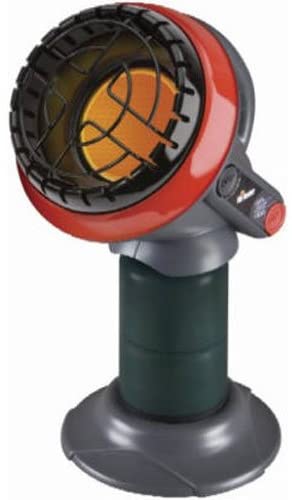
Wrapping Up Stove in Tent Guide
Choosing to cook inside a tent is not a decision you should make lightly. It requires careful precaution and a complete understanding of the dangers involved.
We’ve done our best to include as much detail in this post because we want you to be as safe as possible while using a stove in a tent. If you have any additional advice or have any questions, please leave a comment below.
Make sure to check out our article, What Can I Put My Camping Stove On?


